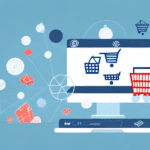Optimizing Local Storage Objects (LSO) for Your Squarespace Commerce Website
Running an eCommerce website on Squarespace? Leveraging Local Storage Objects (LSO) can significantly enhance your website's performance and user experience. LSOs are small data files stored on a user's device, enabling websites to remember user preferences, settings, and other vital information. In this comprehensive guide, we’ll explore how to connect, optimize, and manage LSOs effectively for Squarespace Commerce.
Understanding LSOs and Their Importance in eCommerce
What Are Local Storage Objects?
Local Storage Objects (LSOs) are data files that store small amounts of information on a user's computer, allowing websites to retain user preferences, settings, and browsing history. Unlike traditional cookies, LSOs can store larger amounts of data and remain accessible even when users are offline.
Benefits of LSOs for Squarespace Commerce
- Enhanced User Experience: LSOs enable faster page loading times by storing frequently accessed data, reducing the need to reload information each visit.
- Personalized Recommendations: By analyzing browsing history and user preferences, LSOs help in delivering personalized product suggestions, increasing engagement and sales.
- Behavior Tracking and Analytics: LSOs provide valuable insights into user behavior, helping store owners optimize site layouts, product offerings, and marketing strategies.
For more insights on the benefits of LSOs, refer to the W3Schools guide on cookies and storage.
Connecting LSOs with Squarespace Commerce: A Step-by-Step Guide
1. Define Your Data Storage Needs
Begin by identifying the type of data you want to store using LSOs. Common uses include saving shopping cart contents, user preferences, and browsing history.
2. Implement LSOs Using JavaScript
Squarespace allows custom code injections. Use JavaScript to interact with LSOs by storing and retrieving necessary data. Here's a basic example:
// Storing data
localStorage.setItem('cart', JSON.stringify(cartData));
// Retrieving data
const cart = JSON.parse(localStorage.getItem('cart'));
3. Utilize Third-Party Tools
If coding isn’t your forte, consider using third-party tools that simplify LSO implementation. Platforms like Cookiebot offer user-friendly solutions for managing LSOs.
4. Test Your Implementation
Ensure that your LSOs function correctly across different browsers and devices. Use browser developer tools to monitor storage and troubleshoot any issues.
Best Practices for Optimizing LSOs on Squarespace
Maintain Small Data Sizes
Keep the data stored in LSOs minimal to ensure quick access and reduce the load on user devices. Use data compression techniques where possible.
Set Expiration Dates
Implement expiration dates for LSOs to prevent outdated data from cluttering user devices. This practice enhances performance and respects user storage space.
Consolidate LSO Files
Avoid creating multiple LSO files. Consolidate data into fewer LSOs to streamline data management and improve site performance.
Regularly Clean Up LSOs
Periodically review and delete unnecessary LSOs. Tools like the Adobe Flash Player Settings Manager can help manage and clean LSOs effectively.
Managing LSOs Effectively on Your Squarespace Website
Develop a Transparent Privacy Policy
Clearly outline how your website uses LSOs and the type of data collected. Transparency builds trust with your users and ensures compliance with data protection laws.
Provide User Control Options
Allow users to opt-out or delete LSOs. Implementing features that let users manage their stored data enhances user trust and complies with regulations like GDPR and CCPA.
Stay Updated with Privacy Regulations
Data privacy laws are continually evolving. Regularly update your privacy policy and LSO practices to remain compliant with the latest regulations.
Educate Your Users About LSOs
Create informational sections or dedicated pages explaining what LSOs are, how they work, and their benefits. Educating users fosters transparency and trust.
Overcoming Common Challenges with LSOs in Squarespace Commerce
Addressing Privacy Concerns
Users may worry about their data privacy when LSOs are used. Mitigate these concerns by being transparent about data usage and offering easy ways to manage or delete LSOs.
Resolving Script Conflicts
LSOs can sometimes conflict with other scripts or plugins on your website, leading to errors. To prevent this, thoroughly test new scripts and consider using a Content Delivery Network (CDN) to manage and optimize your site's scripts.
Ensuring Browser Compatibility
Different browsers handle LSOs differently. Test your website across various browsers to ensure consistent functionality and address any compatibility issues promptly.
Advanced Techniques to Enhance Your Squarespace Website with LSOs
Personalized User Experiences
Leverage LSOs to create highly personalized shopping experiences. Track user behavior to tailor product recommendations and marketing messages, increasing conversion rates.
A/B Testing with LSOs
Use LSOs to conduct A/B testing by storing user interactions and preferences. Analyze the data to determine which website versions perform better and make informed decisions to optimize your site.
Optimizing Load Times
Store frequently accessed data such as images or scripts in LSOs to reduce the amount of data that needs to be downloaded during each visit. This strategy can significantly improve your website’s load times and overall performance.
Measuring the Success of Your LSO Strategy
Key Metrics to Track
- Bounce Rate: Monitor changes in bounce rates to assess if LSOs are improving user engagement.
- Page Views per Session: An increase indicates better user interaction with your site.
- Average Session Duration: Longer sessions suggest enhanced user experience.
- Conversion Rates: Track sales and goal completions to measure the impact of LSOs on your business objectives.
Regularly analyze these metrics using tools like Google Analytics to fine-tune your LSO strategy.
The Future of LSOs in Squarespace Commerce
The landscape of web storage and data management is continually evolving. Future advancements in LSOs will likely focus on enhanced security measures, greater storage capacities, and improved integration with emerging technologies like artificial intelligence and machine learning. As data privacy regulations tighten, LSOs will adapt to ensure compliance while still providing valuable functionality for eCommerce websites.
Conclusion
Local Storage Objects are a powerful tool for enhancing the performance and user experience of your Squarespace Commerce website. By effectively connecting, optimizing, and managing LSOs, you can create a more personalized and efficient shopping experience for your users. Stay informed about best practices and evolving technologies to ensure your LSO strategy remains effective and compliant with data privacy standards.






















